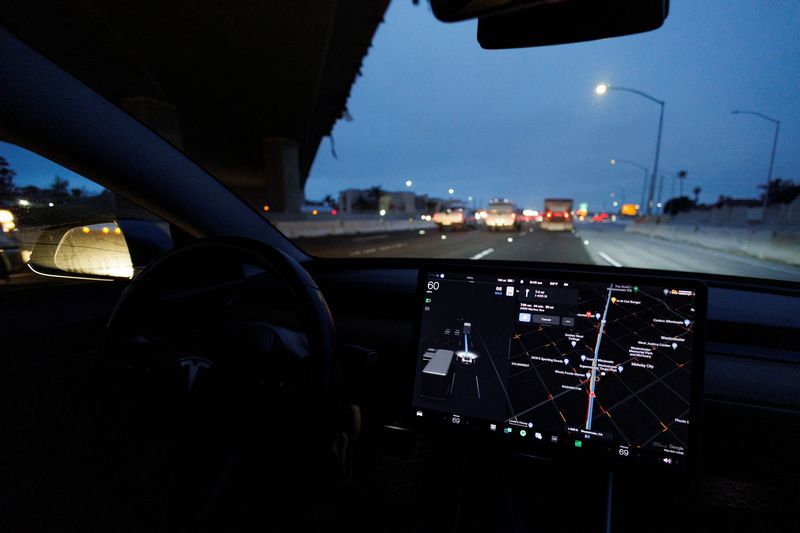By Abhirup Roy
(Reuters) -Drivers are more likely to engage in non-driving activities such as checking their phones when using partial automation systems, new research showed on Tuesday.
Insurance Institute for Highway Safety conducted month-long studies in the U.S. with two such systems - Tesla (NASDAQ:TSLA)'s Autopilot and Volvo's Pilot Assist - to examine driver behavior when the technology was in use.
WHY IT'S IMPORTANT
Major automakers are in a race to deploy technology that partially automates routine driving tasks to make it easier and safer for drivers, and generate revenue. The rush has sparked concerns around the dangers of driver distraction.
The studies show better safeguards are needed, IIHS said in the report.
CONTEXT
Partial automation - a level of "advanced driver assistance systems" - uses cameras, sensors and software to regulate the speed of the car and keep it in the center of the lane. Some enable lane changing automatically or when prompted.
Drivers, however, are required to continuously monitor the road and be ready to take over at any time, with most systems needing them to keep their hands on the wheel.
BY THE NUMBERS
The study with Tesla's Autopilot used 14 people who drove over 12,000 miles (19,300 km) with the system, triggering 3,858 attention-related warnings. On average, drivers responded in about three seconds, usually by nudging the steering wheel, mostly preventing an escalation.
The study with Volvo's Pilot Assist had 29 volunteers who were found to be distracted for 30% of the time - "exceedingly high" according to the authors.
KEY QUOTES
"In both these studies, drivers adapted their behavior to engage in distracting activities," said IIHS President David Harkey. "If you train them to think that paying attention means nudging the steering wheel every few seconds, then that's exactly what they'll do."
"This demonstrates why partial automation systems need more robust safeguards to prevent misuse," he said.
THE RESPONSE

"While use of Pilot Assist can result in a decrease in visual attention, we believe this is due to a feeling of driver safety when these systems are enabled, and that this behavior does not diminish overall safety," a spokesperson for Volvo Cars said in a statement to Reuters, adding its own studies showed an improvement in safety with such systems.
Tesla did not respond to Reuters' request for comment.